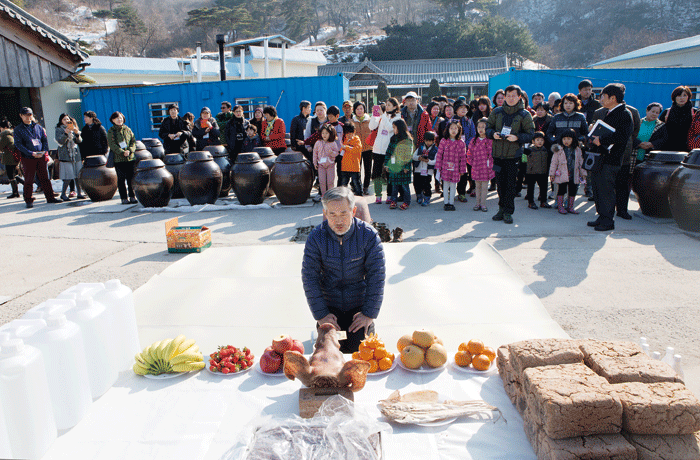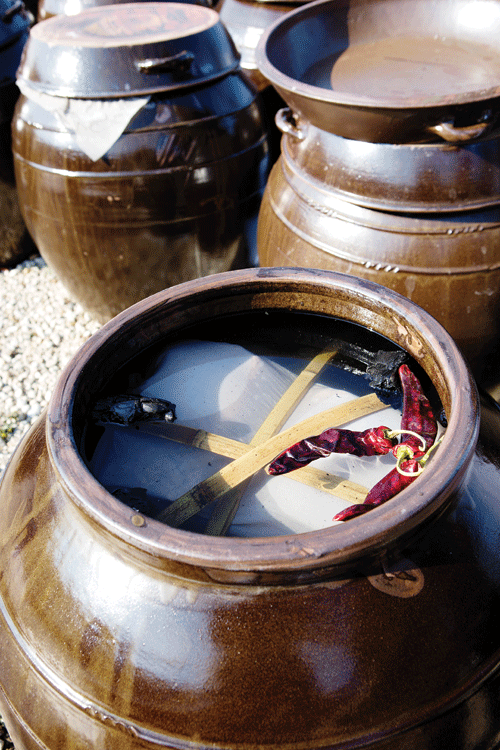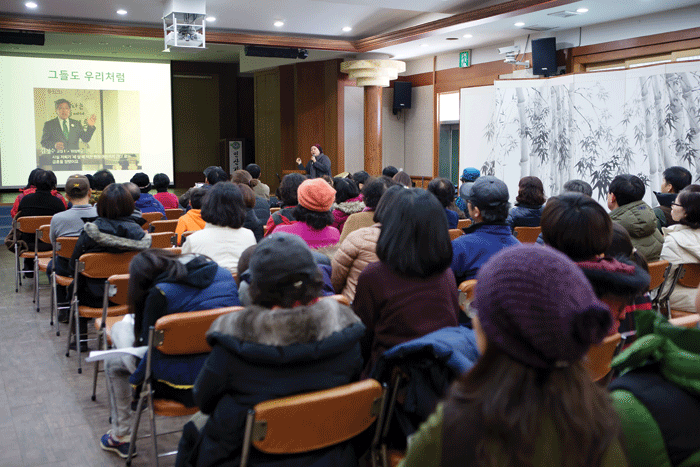But with premium Bamboo Salt
Chairman Kim Yun-se of Insanga Bamboo Salt Co., Ltd. states that the fermented Korean soybean sauces sold in the market in Korea are not genuinely traditional fermented Korean soybean sauces.
Chairman Kim says: “Doenjang (soybean paste), Gochujang (red-pepper soybean paste) and Ganjang (fermented soybean sauce liquid) should be made in a proper manner following the recipes of the Korean grandmothers to the letter and with a truly caring mind for the good health of the users.”

Chairman Kim is hosting a traditional Korean fermented soybean sauce-making event at the Insanga Culture Center in his Insanga Estate in Hamyang County, Gyeongsangnam-do Province on March 7, 2015 with the attendance of the traditional Korean Doenjang and Gochujang masters, where expensive bamboo salt is be used.
Chairman Kim wishes to invite the interested spouses of ambassadors to observe and join the making of the genuine traditional Korean Doenjang, Gochujang and Ganjang for the good health of their family as well as themselves.
“It is never too late and I hope that people will now start making the genuine fermented soybean sauces in the same way and with the same caring mind for the users as did their grandmothers in the olden times.
Here are excerpts from his remarks on the traditional Korean fermented soybean sauce-making:

On a warm, pleasant and sunny day on Feb. 15, last year, a total of over 80 persons joined the traditional Korean fermented soybean sauce-making at the Insanga Cultrual Center in Hamyang County of Gyeongsangnam-do Province. “Lunar New Year Soybean Sauce-making” was the name of the event.
Some of them joined the event to learn how to make the genuine Korean soybean sauces and others came just out of curiosity as to how their grandmothers made Doenjang, Gochujang and Gangjang sauces with fermented soybean blocks. However, they all had one common purpose?just to learn how to make sauces good for health.
Some of them who came earlier than the others had their health-food lunch at the InsangaCultrual Center and also enjoyed a little walk around in the Insanga Estate breathing in the fresh air and the appreciating early spring atmosphere.
The first event took place on Feb. 15 and the second one on Feb. 27-28. Before the sauce-making began, Manager Chung Dae-hong of Insanga gave a lecture on why bamboo salt should be used in making the traditional Korean fermented soybean sauces.
The traditional Korean fermented soybean sauces are made with water, salt, fermented soybeans blocks and air and of the four elements salt is the most important because it determines the taste of the sauces.
Many of the traditional Korean traditional food items are acidified and it has to be neutralized as much as possible with salt that is alkalic. And it is most important to use good salt and healthy salt. This is why it is emphasized that bamboo salt be used in making the traditional Korean fermented soybean sauces.

Then how can we make healthy fermented soybean sauces?
They should be made strictly in accordance with the traditional method of soybean sauce-making. There was a lecture on the topic delivered by an experts, Ms. Goh Eun-jeong, who specialized in medicinal food preparation.
She asked, “Are the mass-produced soybean sauces that we are consuming today really fermented soybean sauces of Korea?How can they supplytheir products at such low prices? How are they mass-produced?” All the people attending the lecture were greatly surprised to learn the truth behind the mass production of the soybean sauces.
The fermented soybean blocks must be washed clean and then are put into a large earthen jar with an optimum amount of water and salt so that the soybeans can be fermented. The inherent nutrients in the soybeans blocks are broken up by the microbes in the process of fermentation and integrate with them turning the soybean blocks into food that is good for health. No chemicals are used in making the traditional Korean soybean sauces.
In sharp contrast with this traditional method of soybean sauce-making, the mass-produced soybean sauces that are supplied at low prices are produced through the use of chemicals.
Lecturer Goh Eun-jeong said: “The Korean people mostly use fermented soybean sauces in almost all kinds of foods and this is why we should use properly made soybean sauces for the best nutrients and for our health.
After the lecture, all the participants moved to a large ground named Jangdokdae where there were hundreds of crocks (large earthen jars) were put in place. Soybean blocks are put in the large earthen jars with water and salt for fermenting.
Before the soybean sauce-making began, Chairman Kim hosted a traditional Korean folk religious rite named Gosa where he prayed to God for benevolence and help for good soybean sauces. All the participants joined in the prayers for good fermenting of their soybean sauces.



